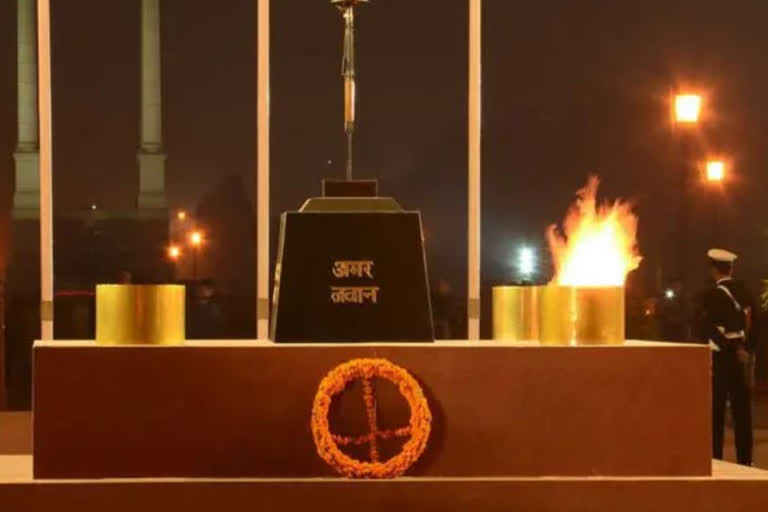New Delhi:The Amar Jawan Jyoti is conspicuous in its absence at the India Gate, visitors to the war memorial here said, even as many others felt the revamp was long overdue and the 'eternal flame' has only been physically moved. The revamped stretch of the rechristened Kartavya Path from the Raisina Hill complex to the India Gate and the verdant lawns surrounding them were thrown open to the public on Friday after two years.
The stretch was inaugurated on Thursday by Prime Minister Narendra Modi who urged people to visit it and take selfies with it and upload them on social media. The Central Vista redevelopment project was envisioned in September 2019. Visitors at the monument were seen clicking selfies and pictures with friends and families.
While many were busy making Instagram reels, some stood rather motionless in front of the sober buff sandstone arches of the over 90-year-old monument with their gazes transfixed at the empty space beneath it. "The Amar Jawan Jyoti is conspicuous in its absence at the very spot beneath the India Gate where we all have seen it flickering since our childhood days, physically or on television or in films over the past several decades," said graphic designer Manish Bhandari from Ghaziabad who visited the monument Friday evening.
"I certainly missed it, it was part of our memories as we grew up. India Gate feels a bit different without its iconic flame," he told the media. Amar Jawan Jyoti -- an eternal flame with an inverted bayonet and a soldier's helmet -- was built to commemorate India's victory in the Indo-Pak War of 1971 and was inaugurated by then Prime Minister Indira Gandhi on January 26, 1972.
On January 21, it was merged with the eternal flame at the National War Memorial, located 400 metres away from the memorial arch. The move sparked a row as experts and ex-servicemen were divided in their opinions. Shahzad Khan, 19, who is from Jharkhand but recently moved to Noida, was also among the visitors who enjoyed the first day after the opening of the India Gate complex.
"I have come to Delhi for the first time. So far I have seen India Gate on TV and in various films. So, I can't tell the difference between the old and the new avatars of it, but I missed the Amar Jawan Jyoti surely," he said. "I really wish it was there and not been moved out. We have seen it in so many films, especially 'Rang de Basanti', and youngsters used to get emotionally charged and feel a patriotic fervour just by seeing the Amar Jawan Jyoti beneath the India Gate," Khan added.
Another section of visitors felt the "eternal flame" has just been physically moved to the National War Memorial and that it "still burns at the new hallowed place" near its original site. "Some things are the same and some have changed. But I feel the revamp was overdue. I had last come here to see the National War Memorial. Yes, the Amar Jawan Jyoti is not present anymore under the arch of India Gate, but it has been merged with the eternal flame of the National War Memorial, so it is still there," said Raj Kumar, who retired as a senior officer from the telecom sector.
Kumar, 71, and his wife Madhu Sharma, 68, also reminisced about the area in the early 1970s and recalled that the Amar Jawan Jyoti was installed two years before their marriage in 1974. The India Gate, a prominent tourist attraction today is a solemn memorial, originally called the All-India War Memorial Arch, designed by architect Sir Edwin Landseer Lutyens, whose foundation was laid in 1921 and unveiled in 1931.
The 42-metre-high British-era landmark, built of buff sandstone on a base of red sandstone, was built to honour the soldiers who died in World War I (1914-1918) and the Third Anglo-Afghan War (1919). Over 80,000 Indians laid down their lives in those campaigns and India Gate bears the names of 13,516 etched on its surface. (PTI)
